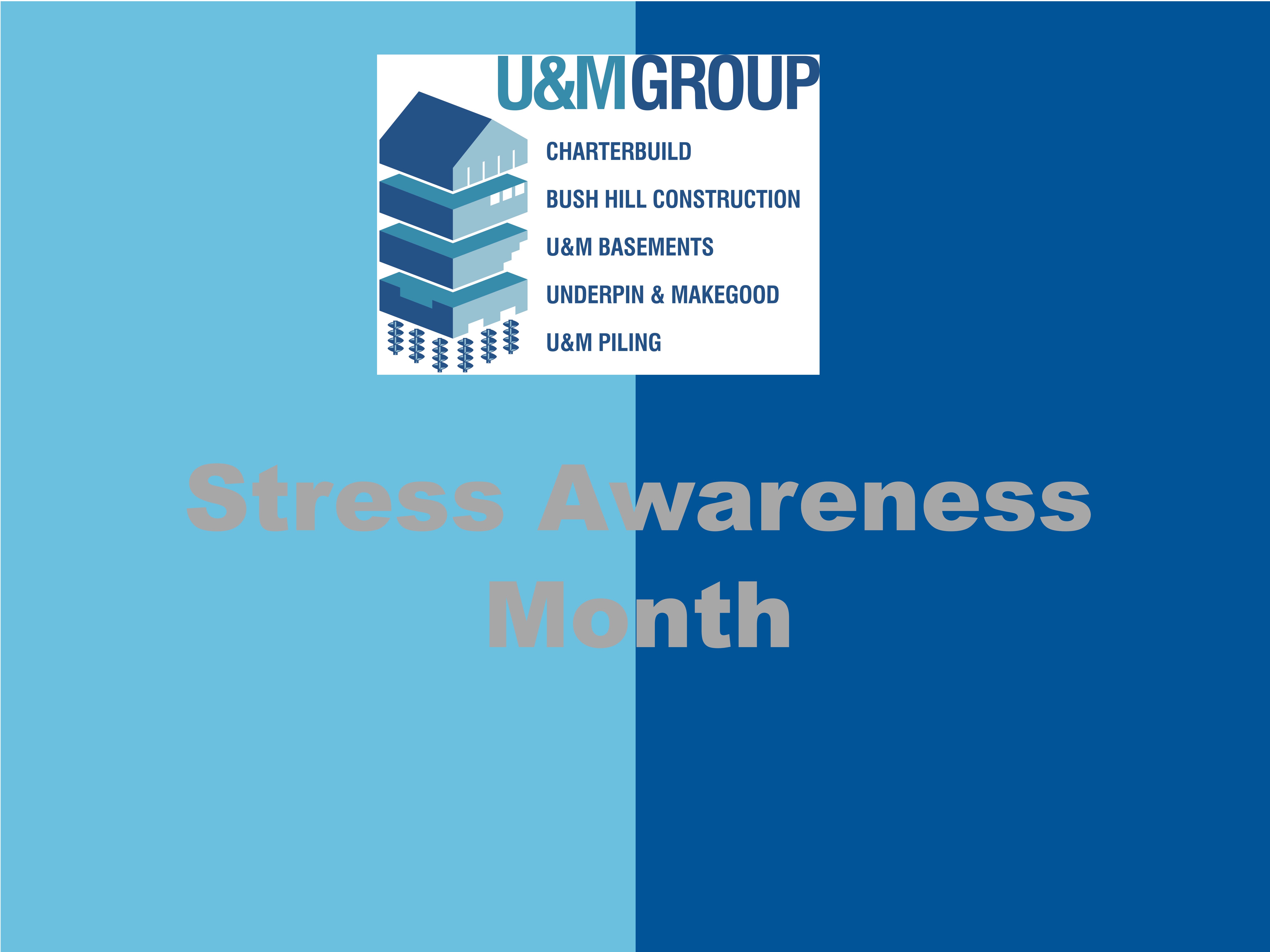
13 Apr How We Protect Our Staff’s Mental and Physical Health
At U&M, the mental and physical health and safety of our staff is something we are committed to protect. One of the issues relating to this is workplace stress. We are aware that our company operates in one of the most rewarding but stressful sectors – statistics show that 4 in 5 construction workers feel stressed whilst at work at some point during the week. During ‘Stress Awareness Month’ we are highlighting ways in which construction companies can aim to reduce the amount of stress employees experience at work.
Why is it important to manage stress levels?
One of today’s most significant public health concerns worsened by the recent pandemic is stress. Mental disorders, heart disease, stroke, immune system disorders, and muscle discomfort are all linked to it. More serious effects of stress include mental breakdown, cancer, suicide, and heart disease. Specifically, research states that two construction workers commit suicide per day, and 300,000 workers leave the workplace per year due to mental health issues. This concerning data emphasises the need for urgent workplace intervention to reduce stress levels among workers in the construction industry.
Stress prevention
As a company, we have put in place safeguards to reduce the effects of heightened stress among workers. We actively look out for signs of stress including overworking and diminished performance, unusual and negative moods, withdrawal from co-workers and friends, fatigue and low energy and accidents at work. Furthermore, we actively encourage our staff to communicate and share their thoughts and feelings regarding workload and any responsibilities delegated to them. We then try to find suitable arrangements to be made accordingly such as flexible work patterns and deadlines, providing training on how to prioritise workload, and holding meetings to discuss matters further, with the aim of improving the mental wellbeing of our team.
We do this according to legal legislation, which covers stress at work, for example, Health and Safety at Work act 1974 and The Working Time Regulations 1998. These legislations influence how board directors observe possible indicators of stress-related issues, such as absenteeism, staff turnover and workplace conflict. This then directly influences HR practises and policies made, which involves updating best practices relating to stress at work, carrying out and reviewing risk assessments which the line managers use to monitor possible sources of stress to feedback to HR and directors. Additionally, safety managers aim to provide further guidance for the line managers by updating them on any potential matters concerning health and safety and how issues can be mitigated. We also encourage our staff to take care of themselves and their co-workers and to take advantage of any resources online and in-person such as counselling that we offer.
Learn how we support International Women’s Day here.




